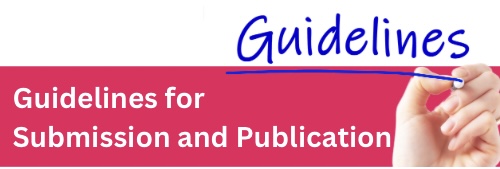PREVALENCE OF NON-ALCOHOLIC FATTY LIVER DISEASE IN POLICEMEN USING CONTROLLED ATTENUATION PARAMETER WITH TRANSIENT ELASTOGRAPHY
Keywords:
non-alcoholic fatty liver disease (NAFLD), controlled attenuation parameter with transient elastography (CAP-TE)Abstract
The purposes of this research were to examine 1) the prevalence of non-alcoholic fatty liver disease (NAFLD) and 2) factors associated with NAFLD in Thai policemen. Samples were two hundred and eighty-seven policemen aged from 18 to 60 years. Questionnaires were composed of demographic data and health data, which passed IOC from three qualified specialists with a score of .67-1.00. Steatosis and fibrosis levels were measured by CAP-TE. Data were analyzed using descriptive statistics, Pearson’s correlation coefficients, Chi-squared test, and logistic regressions.
The major findings were as follows: 1) 170 out of 287 participants were found to have steatosis of S1-S3 stage, which the calculated prevalence of NAFLD in policemen in this study was 59.23%; 2) Factors associated with a higher incidence of NAFLD were gender (male), age (36-60 years old), BMI (> 23 kg/m2), underlying disease (hypertension), waist circumference (> 80 cm. in females and > 90 cm. in males), Triglycerides, LDL, FBS, Alt (higher level) and HDL (lower level), systolic blood pressure (SBP > 140 mmHg), and diastolic blood pressure (DBP > 90 mmHg) (p < .05); 3) Causes of NAFLD were triglycerides level (OR = 1.01, 95%CI = 1.001-1.018, p = .025), BMI (OR = 1.20, 95%CI = 1.022-1.419, p = .026), and waist circumference (OR = 1.08, 95%CI = 1.016-1.153, p = .014).
Thus, we found that it was necessary to screen for NAFLD and metabolic syndrome during an annual check-up in policemen to reduce morbidity and mortality from NAFLD and associated diseases.
Downloads
References
Abeysekera, K. W. M., Fernandes, G. S., Hammerton, G., Portal, A. J., Gordon, F. H., Heron, J., & Hickman, M. (2020). Prevalence of steatosis and fibrosis in young adults in the UK: A population-based study. Lancet Gastroenteral Hepatology, 5(3), 295-305.
Albhaisi, S., Chowdhury, A., & Sanyal, A. J. (2019). Non-alcoholic fatty liver disease in lean individuals. Journal of Hepatology, 1(4), 329-341. https://doi.org/10.1016/j.jhepr.2019.08.002
Anchalee, N., & Muktabhant, B. (2020). Lifestyle an personal characteristic factors associated with overnutritional status among supporting staff of Khon Kaen university. Srinagarind Medical Journal, 35(1), 89-97.
Castera, L., Friedrich-Rust, M., & Loomba, R. (2019). Noninvasive assessment of liver disease in patients with nonalcoholic fatty liver disease. Gastroenterology, 156, 1264-1281.
Chalasani, N., Younossi, Z., Lavine, J. E., Charlton, M., Cusi, K., Rinella, M., . . . Sanyal, A. J. (2018). The diagnosis and management of nonalcoholic fatty liver disease: Practice guidance from the American Association for the Study of Liver Diseases. Hepatology, 67(1), 328-357. https://doi.org/10.1002/hep.29367
Doycheva, I., Watt, K. D., & Alkhouri, N. (2017). Nonalcoholic Fatty liver disease in adolescents and young adults: The next frontier in the epidemic. Hepatology, 65(6), 2100-2109. https://doi.org/10.1002/hep.29068
Gallacher, J., & McPherson, S. (2018). Practical diagnosis and staging of nonalcoholic fatty liver disease: A narrative review. European Medical Journal, 3(2), 108-118.
Hashemi, S. A., Alavian, S. M., & Fesharaki, M. G. (2016). Assessment of transient elastography (FibroScan) for diagnosis of fibrosis in non-alcoholic fatty liver disease: A systematic review and meta-analysis. Caspian Journal of Internal Medicine, 7(4), 242-252.
Khamchata, L., Dumrongpakapakorn, P., & Theeranut, A. (2018). Metabolic syndrome: Dangerous signs required management. Srinagarind Medical Journal, 33(4), 386-395.
Kwak, M. S., Chung, G. E., Yang, J. I., Yim, J. Y., Chung, S. J., Jung, S. Y., & Kim, J. S. (2018). Clinical implications of controlled attenuation parameter in a health check-up cohort. Liver International, 38(5), 915-923. https://doi.org/10.1111/liv.13558
Okur, G., & Karacaer, Z. (2016). The prevalence of non-alcoholic fatty liver disease in healthy young persons. Northern Clinics of Istanbul, 3(2), 111-117. https://www.doi.org/10.14744/nci.2016.28199
Ponciano-Rodriguez, G., & Mendez-Sanchez, N. (2010). Cigarette smoking and fatty liver. Annals of Hepatology, 9(2), 215-218.
Teeratorn, N., Piyachaturawat, P., Thanapirom, K., Chaiteerakij, R., Sonsiri, K., Komolmit, P., . . . Treeprasertsuk, S. (2019). Screening for non-alcoholic fatty liver disease in community setting: A cohort study using controlled attenuation parameter-transient elastography. Journal of Gastroenterology and Hepatology (JGH Open), 4(2), 245-250. https://www.doi.org/10.1002/jgh3.12252
Than, N. N., & Newsome, P. N. (2015). A concise review of non-alcoholic fatty liver disease. Atherosclerosis, 239, 192-202.
Vanduangden, K., Chaiteerakij, R., Thanapirom, K., Sonsiri, K., & Treeprasertsuk, S. (2017). Prevalence of nonalcoholic fatty liver disease (NAFLD) diagnosed by controlled attenuation parameter with transient elastography in subjects with and without metabolic syndrome. Chulalongkorn Medical Journal, 61(4), 483-495.
Yotongyos, M., & Swasdison, P. (2014). Determining sample size for research. Nakhon Ratchasima: Academic Service Centre Institute for Promotion of Research and Innovation Development Fort Suranari Hospital.
Downloads
Published
How to Cite
Issue
Section
License
ผลงานที่ได้ตีพิมพ์แล้วจะเป็นลิขสิทธิ์ของวารสารพยาบาลตำรวจ















